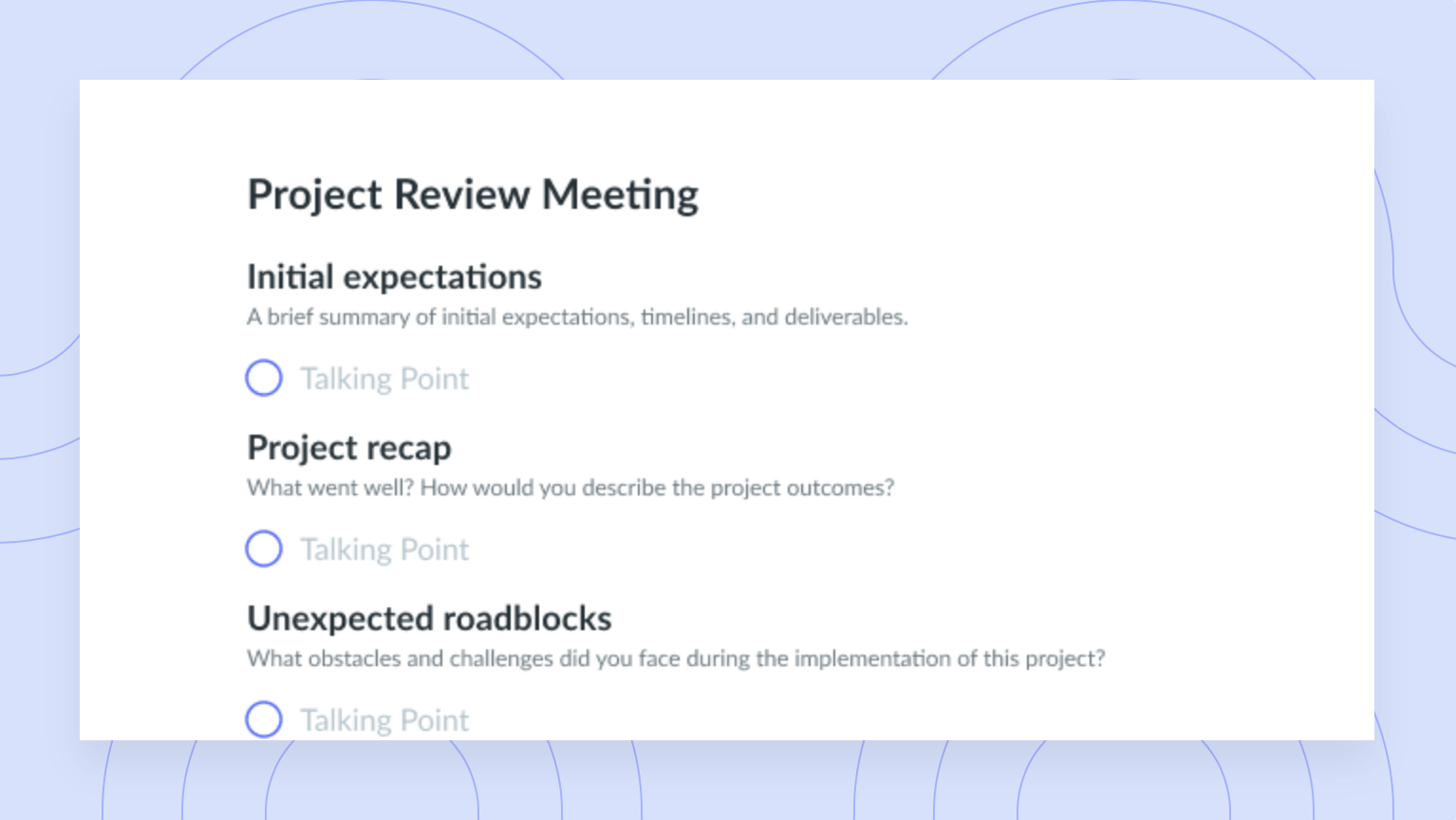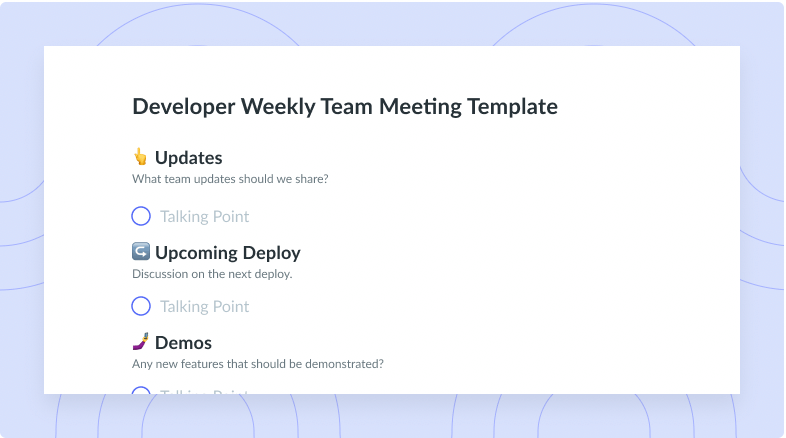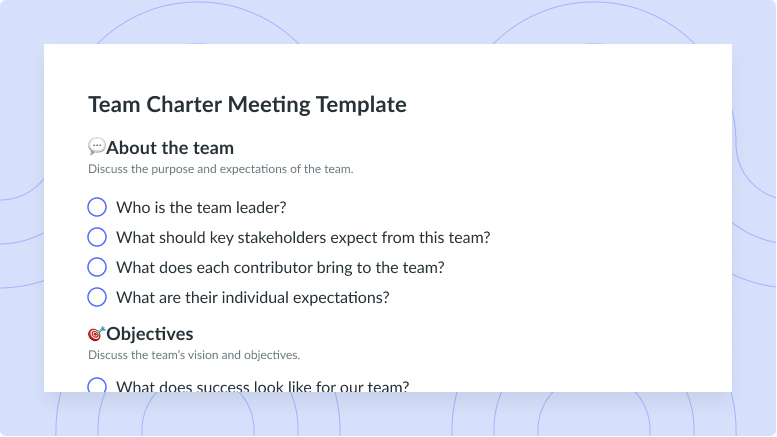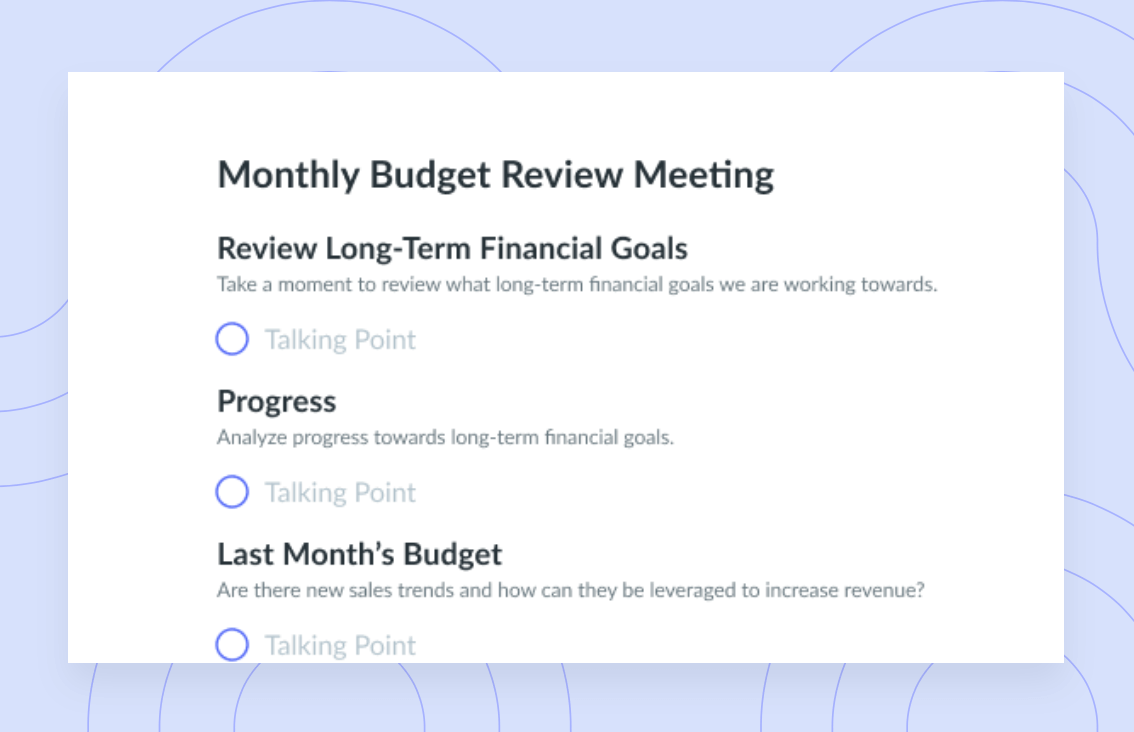Why Silent Meetings Might Be the Right Move for Your Team
A meeting where nobody talks? Household-name organizations have successfully used silent meetings – and you can too.
The image of meetings in your mind probably involves people talking and lots of ideas bouncing around. Maybe you’re also seeing that handful of people who don’t really say anything. But what if those people do want to chime in? What if the shyest people at your meetings have some of the best ideas? Silent meetings get these ideas – and all your team’s best ideas – out in the open. Here’s how to run them.
- What is a silent meeting?
- Benefits to silent meetings
- When to use – or not use – silent meetings
- How to conduct a silent meeting
- Can silent meetings work for virtual teams?
What is a silent meeting?
A silent meeting is one with limited speech or conversation. Instead, in the silent meeting format, the meeting facilitator starts with a topic or question. Then, everyone gets something called a “table read” and reads silently. After that, everyone writes their thoughts on sticky notes, index cards, or in Fellow – no talking.

Silent but delightful
Write down questions or thoughts throughout the silent meeting in a collaborative meeting agenda that everyone can see and contribute to! Try using Fellow.
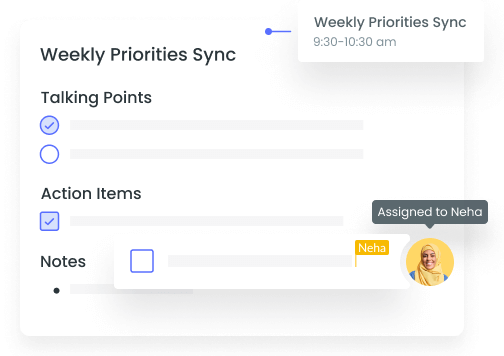
Benefits of silent meetings
Jeff Bezos first introduced silent meetings at Amazon to replace out-loud conversations about slideshows. He instead gave meeting attendees six pages to read silently at the meeting. Later, when Alyssa Henry left her role as VP at Amazon Web Services, she brought silent meetings to Square. The point is: The companies you know and love use silent meetings. Here’s why.
- They create an equal playing field
- They give everyone enough time to understand everything
- They lead to well-thought-out feedback
- They cut down on repetition and confusion
- They give everyone a chance to share and comment on ideas
- People can read faster than they listen
- Remote attendees can more easily participate
- Non-native speakers can more easily participate
1 They create an equal playing field
Some people on your team might feel a bit shy about sharing their ideas. Maybe they’re not that confident at work, or maybe they’re just quiet across the board. Silent meetings are great for these introverted attendees, whom louder folks might accidentally box out. These attendees can bring their ideas out of their heads and into the real world without worrying what others think.
Better yet, when your meeting facilitator gathers everyone’s ideas, they’ll all be anonymous. That means shy or anxious team members don’t have to worry about feeling embarrassed in front of the whole team. But maybe that fear was never realistic: What if everyone is super into their ideas? That sort of silent confidence boost can be great for morale.
2 They give everyone enough time to understand everything
As great as classic brainstorming sessions can be, they’re also a lot. It can be easy to get lost in all the back-and-forth and not quite understand what’s happening. Silent meetings solve that problem. You’ll give plenty of time for attendees to read everything they should know and react to it. No more losing track of the conversation as it barrels ahead.
3 They lead to well-thought-out feedback
The rush of out-loud meetings can lead to people blurting out ideas just to stay engaged. To be clear, these ideas can still be good! But silent meetings can develop these ideas further. For example, let’s say you have a 30-minute reading and writing period in your silent meeting agenda. That’s plenty of time for everyone to understand everything and come up with ideas they can really stand behind.
4 They cut down on repetition and confusion
Two people talking about something in a meeting could be making the same point in different ways. One of them could also be saying it in a way that totally confuses everyone. When everyone instead writes their ideas separately and reviews everything together, you’ll run meetings with less time spent on repetitive, confusing things. Your meetings will be more efficient, and everyone will get closer to being on the same page.
5 They give everyone a chance to share and comment on ideas
A silent meeting basically guarantees that everyone there contributes. It also displays all your team’s ideas for everyone to comment on in all kinds of ways. A comment could be as simple as “great idea” or as complex as a way to further develop the idea. All these comments can be anonymous too so nobody worries about sharing their ideas.
6 People can read faster than they listen
Most people can read faster than they listen, so you can probably fit more topics into a silent meeting. It can take less time to read a clearly written table read than listen to a presentation or conversation. The result is that your team gets on the same page sooner than later.
7 Remote attendees can more easily participate
We all know that one teammate who always has audio problems when they chime in at the virtual meeting. All the time you spend trying to fix the problem can be a total drain on your meetings. But what if that person never had to speak? In a silent meeting, they can come up with – and then share – ideas without a peep. That’s better for both them and the whole team.
8 Non-native speakers can more easily participate
Let’s say that your native language is English but you’re meeting with a Spanish-speaking company to pitch them on your products. Maybe you’ve also been practicing Spanish for ages. Yet when you try to understand what everyone’s saying in Spanish, you come up blank. What if you could just read what they’re saying at your own pace instead?
That feeling might be what non-native English speakers on your team go through during your meetings. When you give these folks plenty of time to read English silently with the whole team, you make it easier for them to participate. And if they’re from another part of the world entirely, the ideas on their sticky notes can be uniquely valuable.
When to use – or not use – silent meetings
Silent meetings might seem too weird to try. In reality, they can be highly effective if you use them at the right time. Here’s when (and when not) to use silent meetings.
When to use silent meetings
Silent meetings are great for:
- Complex decisions that require lots of thinking. Traditional out-loud conversations can lead to people talking over each other. They can also give people less time than they need to really marinate on an idea. Silence does the opposite. It gives everyone ample space to think about something without input from others, in a space where they can’t do any other work.
- Smaller meetings. Though some people have successfully used silent meetings with large groups, they’re especially effective with just over a dozen people. Think about it: If you’re gathering everyone’s individual ideas with sticky notes or index cards, those piles might get big. So big, in fact, that they get disorganized. Small piles are better: You can quickly organize them and present them to the whole group to think about more.
- Brainstorming meetings. Once someone starts reading in silence, their ideas and reactions can flow like water. Each of those thoughts is something they can write down without anyone else’s judgment. And each person could reasonably come up with dozens of ideas during a 30-minute table read. With 10 or 15 people in the room, that’s hundreds of ideas from your team.

When not to use silent meetings
Silent meetings might not work as well for:
- Inspirational meetings. Let’s say you’re a leader and your job is partially to inspire your team. In silence, your team members can only hear their own thoughts, not the inspiration you want to share. You’re better off giving some sort of speech and opening the floor to questions afterward. This way, you get your message across and give your team the chance to say what they think.
- Team-building meetings. If you’re sitting down with your team to build trust, silence won’t help. And if you’re gathering everyone just to chat and build rapport, silence isn’t effective. Exciting conversations are way better than just sitting there in reflection if you’re trying to connect everyone.
- Large meetings. The more people you gather for silent meetings, the more sticky notes or index cards you’ll have at the end. You’ll then have to make time for everyone to look at every thought. Most people will fizzle out well before they can take that all in.
How to conduct a silent meeting
Silent meetings are so different from the norm that you might feel a bit off on your first go-round. Keeping a checklist of things to do can help. The below list includes every step you’ll need to take for effective silent meetings.
- Write a short meeting agenda
- Decide who’s facilitating
- Write and print your table read
- Give everyone time to think and come up with ideas
- Get your team’s thoughts
1 Write a short meeting agenda
A silent meeting often focuses on one idea – say, coming up with a solution to a big marketing obstacle. Your silent meeting agenda should include space to read and think about this idea and review the group’s ideas. It should also include a short introduction and close-out. And that’s all it needs. You can keep this one simple.
2 Decide who’s facilitating
Only one person can speak at a silent meeting: The facilitator. This person hands out the table read, introduces the topic, and starts the silent period. The facilitator can be anyone on your team – you could try rotating folks in and out of this role over a few meetings.
3 Write and print your table read
Your table read should be ready to go before the meeting. It should be an overview of the problem you’re solving, perhaps with questions to guide everyone’s thinking. Once you’ve finished it, you should print out enough copies so that everyone gets one. Your facilitator will give everyone the table read before they introduce the topic.
4 Give everyone time to think and come up with ideas
Leave enough time for your team to read the entire brief and jot down ideas and thoughts. For an in-person meeting, you can provide sticky notes or index cards where they can write things down. For virtual meetings, you can have everyone use Google Docs or shareable digital sticky notes. Or you can give everyone access to Fellow’s Streams tool, which is basically a shared notepad. You can access it right from the same dashboard where you run your silent meetings.
5 Get your team’s thoughts
There are two ways to look through everything that’s crossed your team members’ minds. You can run a semi-silent review where your facilitator discusses some ideas and thoughts that lots of people mentioned. You can also run a fully silent review where everyone looks at each idea on index cards or in an app and leaves comments. After this step, you can end the meeting.
Can silent meetings work for virtual teams?
Silent meetings can absolutely work for virtual teams. For starters, people who feel awkward about group silence get to be truly alone with their silence if you go virtual. What’s more, digital sticky note apps can better organize and store everyone’s ideas than piles of actual paper, and they’re generally anonymous. If anything, silent meetings might be among the meeting types that lose the least when you go virtual.
Silence is a virtue
For certain needs, silence can be a blessing. Brainstorming, small groups, complicated decisions – these are all situations where silent teams can come up with great ideas. For both in-person and virtual silent meetings, Fellow can help you create and share an agenda and a digital space for ideas. You don’t need to say a peep to use Fellow for problem-solving, collaboration, and so much more.









